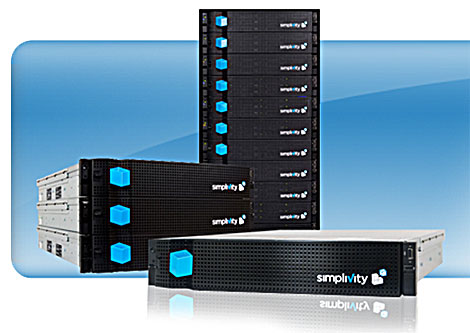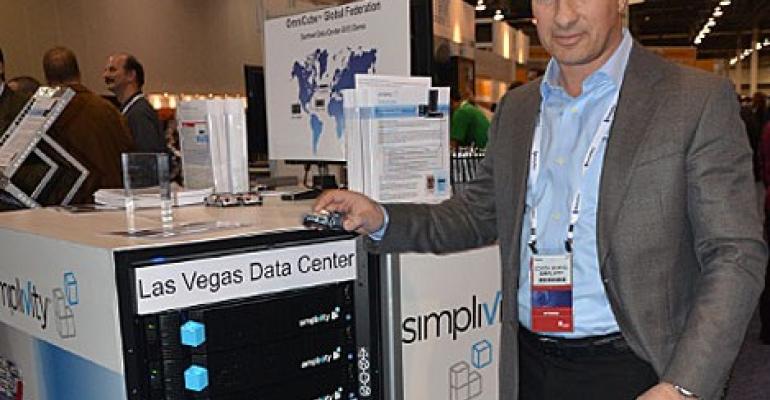LAS VEGAS - What's in your racks? Servers and storage, right? Maybe switch gear, too. But as the need to handle data has grown, so has the number of specialized appliances required to manage that data, including domain and protection appliances, back-up appliances and WAN optimization devices. All these items have their own overhead, in terms of footprint and power, and different management applications, with different screens.
We are seeing the evolution of technology to "converge" this hardware and firmware stack, into a single box. The first endeavors, from some of the largest players, included servers, storage and switch, with VMWare. Some call this Convergence 1.0. Then, companies introduced servers, switch and storage, with a virtualized environment of all the resources, this could be called Convergence 2.0.
Doron Kempel, CEO, of Simplivity, says his company has introduced Convergence 3.0, or the whole stack in one box, including servers, switch, storage, de-dupe and back up, and a WAN function.
"This is the software defined data center, right here," said Kempel, on the floor of the Gartner Data Center Conference 2013 at The Venetian. "So we de-dupe and compress the data, so that operation is only done one time, not in each appliance," he said. By reducing IOPs, the technology only writes data one time, increasing performance.
How does the OmniCube work? The unit is a combination of hardware and software. The OmniCube is a 2U appliance which features a customized PCIe card to improve performance, as well as software that can be run on the OmniCube, or out in your cloud instances, such as AWS. The cubes are plugged into VCenter for the ability to monitor and manage the systems.
What is the benefit of approaching convergence in this way? There's high availability of the system, with no single point of failure; increased performance, with the units optimized for IO intensive workloads and serviceability, with extensive reporting, alerting and "call home" capabilities.
John Doerr, General Partner of Kleiner Perkins, and a highly respected VC in the technology space, has called SimpliVity "one of the biggest innovations in enterprise computing since VMware, OmniCube is radically simplifying IT infrastructure with systems that are better, faster, smaller and less expensive than competitive offerings. SimpliVity is well positioned to transform IT."
The company started in Boston in September 2009, and since has raised $101 million in funding. And the OmniCubes have been deployed in a number of scenarios, such as regional banks, a large dairy distributor and a municipality which uses the infrastructure to run its 9-1-1 system. In addition, large organizations are using the units to build cloud infrastructure. For example, Swisscom, a large Swiss telecommunications company is using the cube to build out its cloud.
While these deployments may be small, such as two units in one location, and two units in another, the future will include large enterprise scalability. "These will scale to thousands of nodes," said Kempel.






